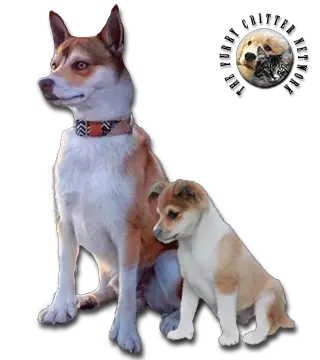Breed Standard
Head: Medium width, conical shape. Slightly domed skull. Pronounced eyebrows. Pronounced stop. Slightly arched nose bridge. Absence of premolars is common.
Ears: Medium size, triangular. Broad at the base. Very mobile, carried erect. When the dog is underwater, the ear folds back sealing the ear canal.
Eyes: Slightly almond shaped. Yellowish-brown color.
Body: Rectangular outline. Strong. Fairly strong neck with collarette. Long chest is well let down. Straight back. Slightly sloped croup. Slightly tucked up belly.
Tail: Set high. Moderate length. Richly clad. Carried either in a ring, slightly curled over the back, or hanging.
Hair: Dense and heavy. Short on the head and front of the legs. Longer on the neck, back of the thighs, and tail. Soft undercoat.
Coat: Color always in combination with white: chestnut to fawn sprinkled with black-tipped hairs; gray; white with dark spots. Tips of hairs darken with age.
Size: Dog: 35 to 38 cm.Bitch: 32 to 35 cm.
Weight: Dog: approx. 7 kg.Bitch: approx. 6 kg.
History
The Lundehund originated on Vaeroy Island, one of the Lofoten Islands off the northern coast of Norway. The breed is thought to have been developed in the village of Mostad. In the past, the Lundeund was used for hunting web-footed birds and puffins (Lunde in Norwegian) on cliffs and for guarding livestock. When this work was abandoned, the breed almost disappeared. It was not reestablished until after 1960. This breed is esteemed for its special skills and the fact that its anatomical structure is very similar to that of primitive dogs.
Behavior
This vigorous, energetic, alert, lively dog has an independent streak, but is not aggressive. He is a cheerful, affectionate pet. The breed is remarkably agile and flexible. In fact, Lundehund can turn his forelegs straight out at 90-degree angles, and his neck is so flexible, he can touch his back with his head. Firm training is required.
This dog cannot be confined indoors. He needs space and considerable exercise. Regular brushing and combing are required.
Function
Hunting Dog, Pet.
Health
Lundehund gastroenteropathy is a set of digestive disorders that can lead to an overgrowth of digestive bacteria, and a loss of ability to absorb nutrients from food. In extreme cases the dog can starve due to its inability to derive nutrients and protein from food, regardless of food intake. All Lundehunds have the genetics to have this illness, though not every Lundehund is severely afflicted and some are symptom free. There is no cure, though the disease can be managed.






